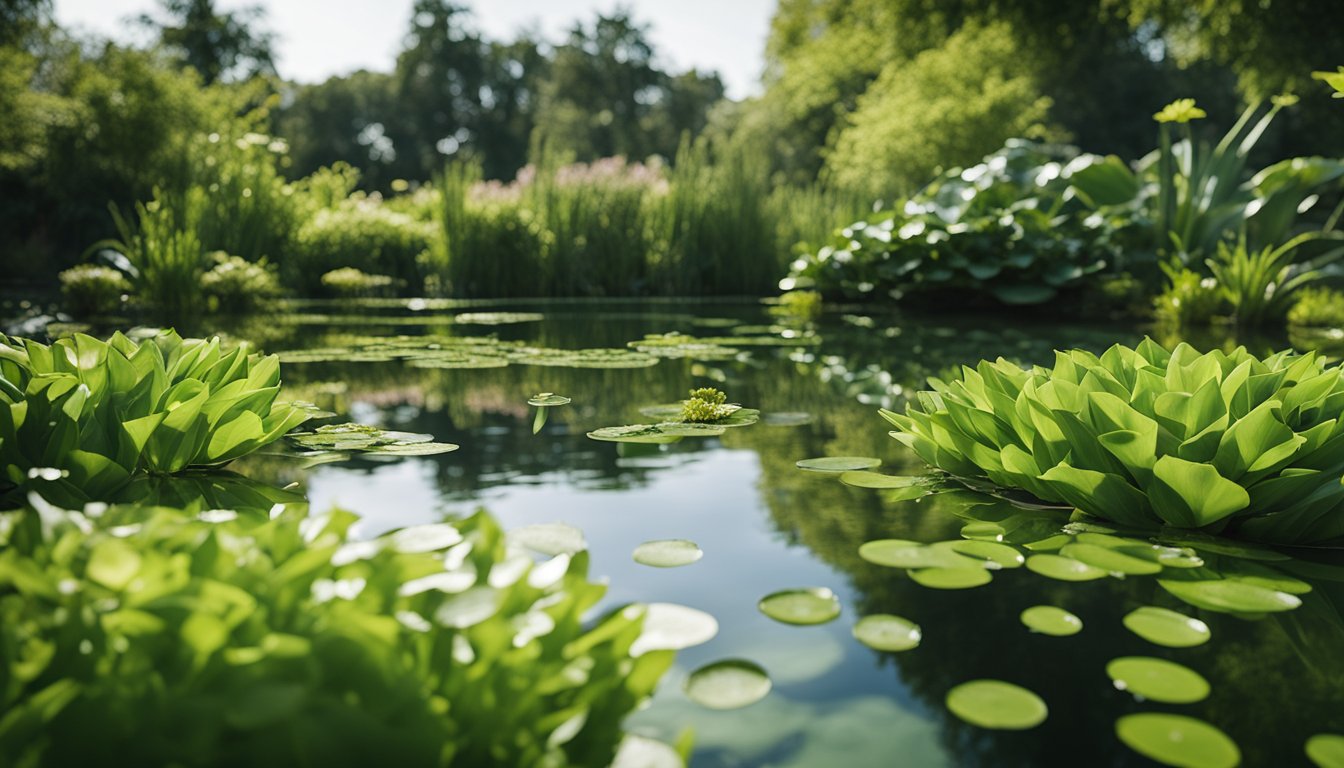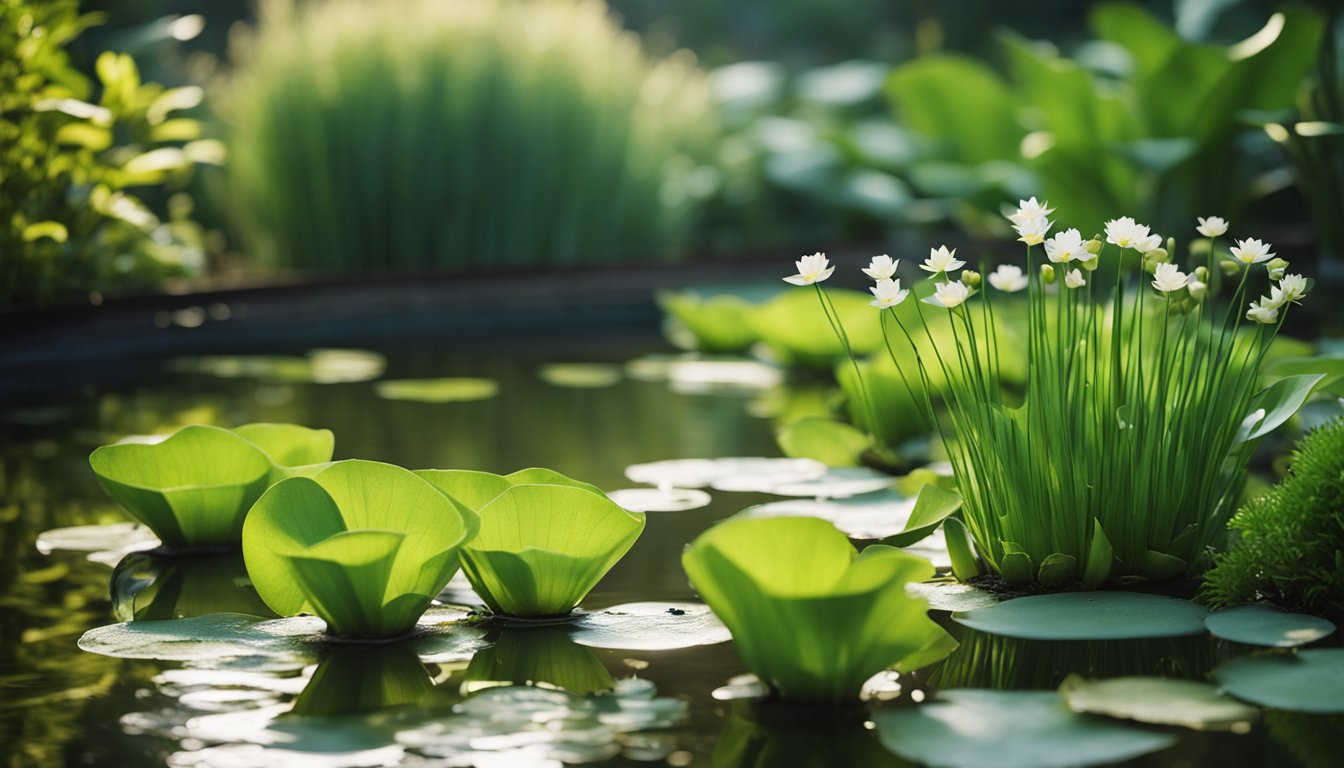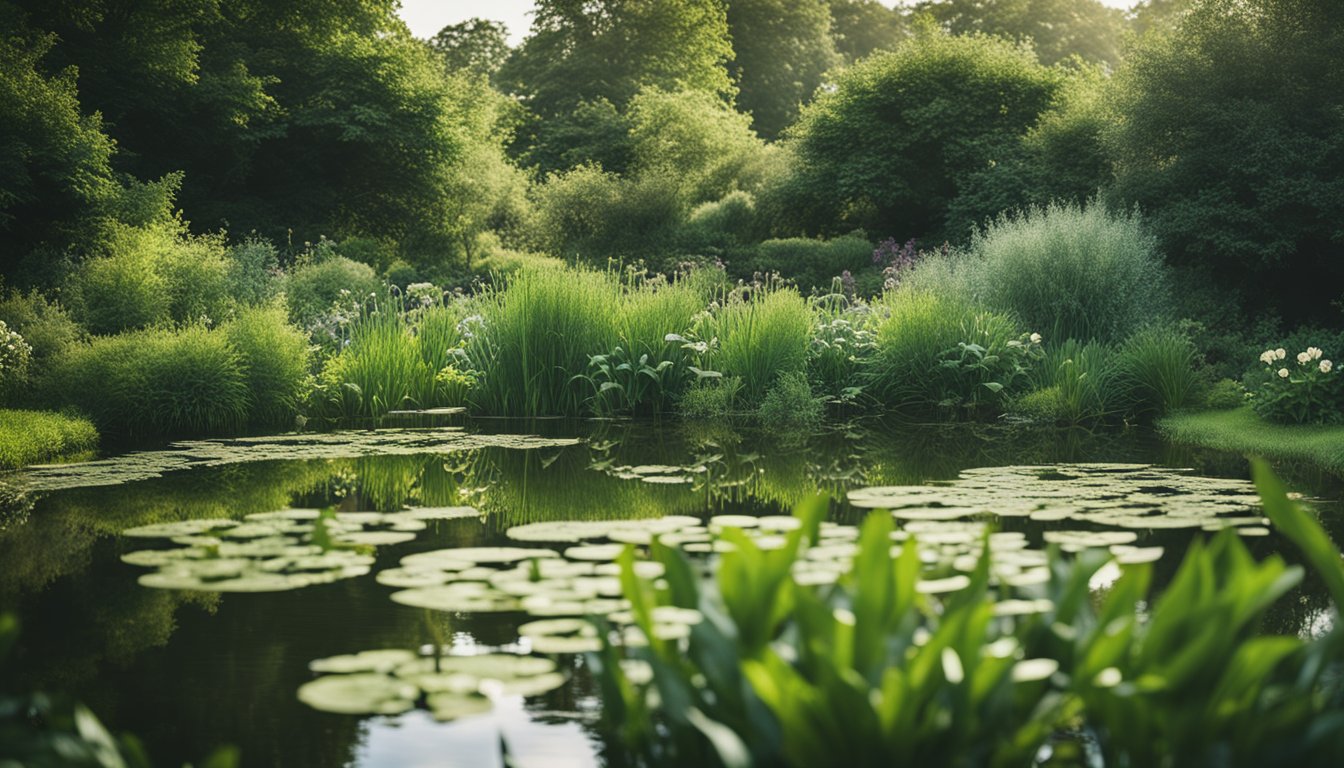Late updated: 15 Jul 2024 08:07
Written by: Emily Thornton
Native UK Aquatic Plants For Garden Ponds: Best Choices and Care Tips
Transforming your garden pond into a vibrant ecosystem can be a fulfilling experience. Native UK aquatic plants are an excellent choice for creating a balanced and beautiful pond, as they not only thrive in our climate but also support local wildlife. Choosing native aquatic plants ensures that your pond will harmonise with the natural environment, providing an attractive habitat for fish, insects, and birds.

A variety of native UK aquatic plants are available to suit all pond sizes and conditions. From the elegant water lily with its stunning blooms to oxygenating plants that help maintain water quality, there's something for every pond. These plants play a vital role in maintaining the ecosystem by providing food and shelter, and they are easier to manage compared to some invasive non-native species.
Proper cultivation and care are key to a successful and thriving pond. Understanding the specific needs of each plant, such as water depth and exposure to sunlight, can make a big difference. With the right combination of plants, your garden pond can flourish throughout spring and summer, becoming a focal point of natural beauty and biodiversity.
Key Takeaways
- Native aquatic plants support local wildlife and are easier to manage.
- Choosing the right plants ensures a balanced and natural pond ecosystem.
- Proper care and selection lead to a thriving pond throughout the seasons.
Selection of Native UK Aquatic Plants
Choosing the right native aquatic plants for your garden pond helps maintain a balanced ecosystem. These plants offer various benefits such as providing shelter for wildlife, oxygenating the water, and enhancing the pond's aesthetic appeal.
Surface Floating Plants
Water lilies (Nymphaea alba) and frogbit are popular floating plants that thrive in UK ponds. Water lilies, with their broad, floating leaves and stunning white flowers, create shady spots that help keep the water cool and reduce algae growth. Duckweed is another viable choice, offering tiny leaves that float on the surface. These plants also provide excellent shade and shelter for pond wildlife, including small fish and insects.
Oxygenating Plants
Oxygenating plants are crucial for maintaining high oxygen levels in pond water, which supports healthy fish and prevents algae overgrowth. Hornwort (Ceratophyllum demersum) and rigid hornwort are effective oxygenators. Hornwort has needle-like foliage that remains submerged, efficiently releasing oxygen into the water. Fontinalis antipyretica, also known as water moss, is another excellent option, growing well in the cooler, shaded parts of the pond and ensuring a steady oxygen supply.
Marginal and Bog Plants
Marginal and bog plants thrive in the shallow edges of a pond, where their roots are submerged but their foliage remains above water. Marsh marigold (Caltha palustris) produces vibrant yellow flowers in spring, brightening up the pond's perimeter. Yellow flag iris (Iris pseudacorus) is another striking choice with its tall stems and yellow blooms. For a bit of variety, consider water avens or creeping jenny, both of which offer attractive foliage and flowers, creating a lush, naturalistic pond margin.
Submerged and Shallow Water Plants
Submerged plants like water violet (Hottonia palustris) and brooklime are essential for clear water and healthy pond environments. Water violet features feathery underwater leaves and delicate above-water flowers, making it both functional and beautiful. Brooklime grows in shallow water and produces lovely blue flowers, helping to stabilise the pond's environment. Water mint is another excellent option, spreading rapidly in shallow areas and offering a fresh, minty fragrance that can deter pests.
These native UK aquatic plants are integral to creating a thriving garden pond, ensuring it becomes a vibrant part of your outdoor space. By carefully selecting a variety of species, we can enhance the pond's beauty and functionality while supporting local wildlife.
Cultivation and Care

Establishing and maintaining a flourishing garden pond with native UK aquatic plants requires specific techniques and ongoing attention. By paying close attention to planting methods, regular upkeep, and encouraging local wildlife, our ponds can become vibrant ecosystems.
Planting Techniques
When introducing native pond plants, proper planting is essential for healthy growth. We recommend using aquatic compost in containers that are suitable for each plant's growth habits.
Floating plants like water lilies should be potted in large, wide containers and placed at a depth where they receive full sunlight.
Marginal plants such as spiked water milfoil can be planted in shallow water, typically 15-30 cm deep. They should be supported by fine gravel to prevent them from shifting and to maintain their upright growth.
Oxygenating plants like hornwort should be weighted down to ensure they remain submerged. These plants play a crucial role in maintaining water clarity and supporting pond health.
Maintenance and Management
Regular care is key to sustaining a healthy pond ecosystem. We must be vigilant in managing invasive plants that might outcompete natives. Regular trimming and removal of dead plant material prevent decay which can contribute to impurities and algae blooms.
Frequent water checks help us monitor the health of the pond. Testing for pH levels, nitrates, and phosphates ensures the water remains hospitable for both plants and wildlife. During spring and summer, additional care might be necessary due to increased growth and warmer temperatures. It’s beneficial to occasionally thin out plants that grow too vigorously.
Installing a pond filter can additionally aid in maintaining clean and clear water, supporting the overall health of the ecosystem.
Supporting Wildlife
To create a truly thriving wildlife pond, it's crucial to consider the needs of local fauna. Our ponds can attract a variety of species including newts, frogs, dragonflies, birds, and even pollinators like bees.
Providing shallow areas encourages amphibians such as frogs and newts to breed and for tadpoles to develop. Marginal plants offer shelter and breeding grounds for these species.
Creating shaded spots with plants that have broad leaves can give fish and other aquatic life a place to hide from predators. Additionally, submerged plants can be a haven for both fish eggs and insect larvae.
Encouraging pollinators with flowering aquatic plants not only adds beauty but also supports bees and other insects essential for a balanced ecosystem. By combining these practices, we can foster a pond environment that benefits from the reciprocal relationship between plants and wildlife.
Frequently Asked Questions

Native UK aquatic plants play a crucial role in enhancing garden ponds, offering both aesthetic value and essential support for local wildlife. Understanding which plants to introduce and how to establish a balanced ecosystem is key to creating a thriving pond environment.
What are the best native aquatic plants to introduce into a UK garden pond?
Some of the best native aquatic plants for UK garden ponds include the yellow flag iris, marsh marigold and water forget-me-not. These plants not only add vibrant colours but also provide habitats and protection for various pond wildlife.
Which plants are essential for supporting wildlife in a UK pond?
Plants such as the common water crowfoot and water mint are essential. They offer food and shelter to insects, amphibians, and other pond dwellers. Marginal plants like brooklime and water avens also play a significant role by creating shaded areas and protective cover.
How can one naturally establish a balanced ecosystem in a UK garden pond with native plants?
To establish a balanced ecosystem, we should introduce a mix of submerged, floating, and marginal plants. Submerged plants, like hornwort, help oxygenate the water. Floating plants, such as frogbit, provide cover and reduce algae growth. Marginal plants create habitats for wildlife.
What considerations should be taken when selecting native plants for a small pond in the UK?
When selecting plants for a small pond, choose species that will not outgrow the space. Focus on a balanced variety of plants that contribute to water quality and offer habitats for local wildlife. Avoid highly invasive species that may overcrowd the pond.
Which native UK pond plants are most beneficial for water quality and clarity?
Plants such as water crowfoot and hornwort are effective at keeping water oxygenated and clear. They absorb excess nutrients which helps to reduce the growth of algae. Reeds and rushes along the pond margins also play a significant role in filtering water.
What methods are recommended for planting aquatic plants in a UK wildlife pond?
When planting aquatic plants, we recommend placing them in planting baskets to restrict their growth. Ensure that each plant is placed at the appropriate depth based on its species. Regularly check and maintain the plants to prevent overcrowding and to keep the ecosystem balanced.
